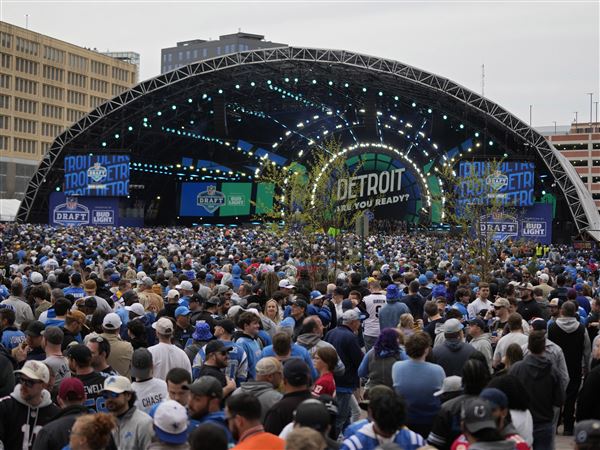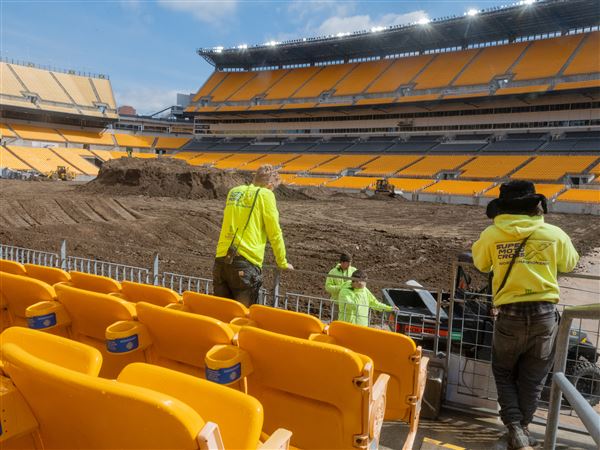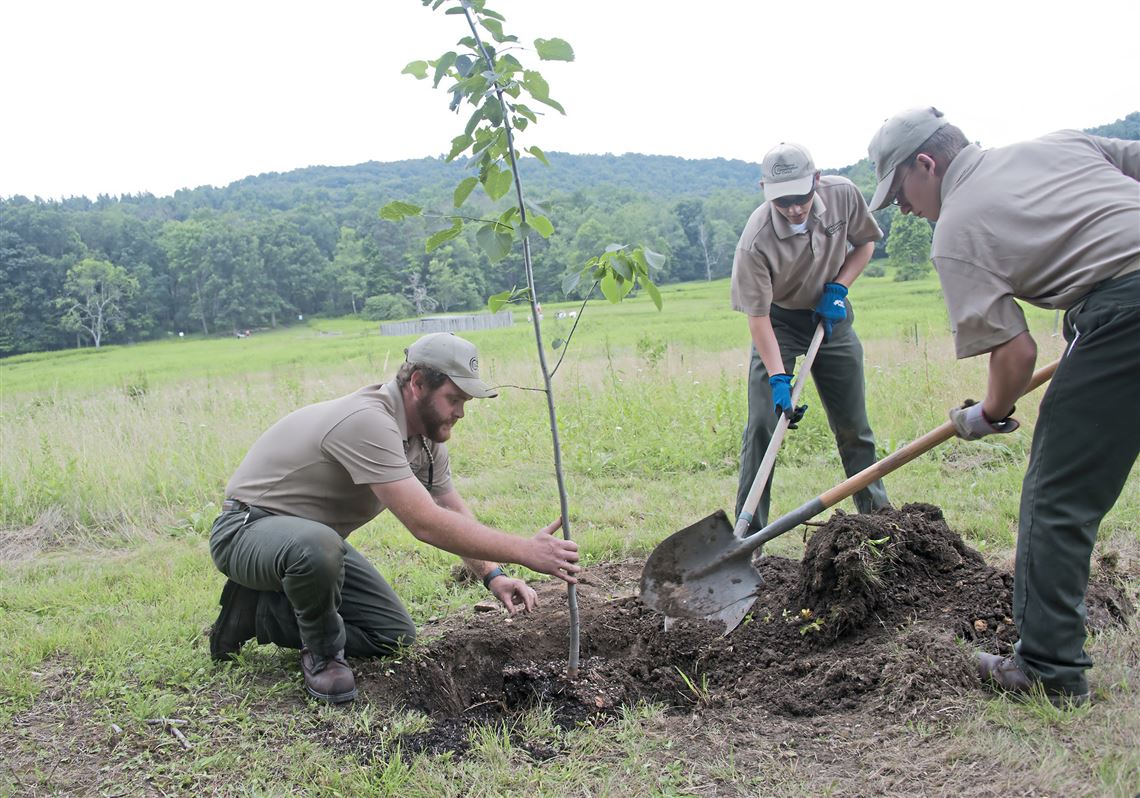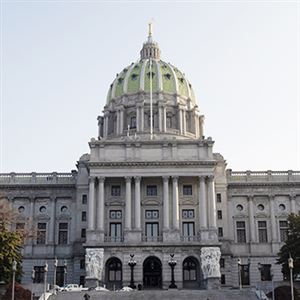MaryEllen Snyder, management assistant for Western Pennsylvania National Parks, answered the door in a dark green cardigan, the iconic National Park Service patch on her left sleeve.
Even on a July afternoon, the Fort Necessity National Battlefield park headquarters building felt cool enough to warrant Ms. Snyder wearing the sweater.
In a conference room down the hall, her husband and parks project manager, Leroy Renninger, rolled out blueprints and highlighted what’s below the building’s backyard.
Pipes in five separate vertical wells reach 400 feet underground to harness the Earth’s constant 50-degree temperature below Western Pennsylvania, keeping the headquarters at 68 to 70 degrees year-round.
The couple has been working together since 1979, when Mr. Renninger proposed in Yellowstone National Park. Their Park Service career meandered from Wyoming to New York then Western Pennsylvania where they said they’re now focusing on a sustainable future of the five park properties — Allegheny Portage Railroad, the Flight 93 National Memorial, Fort Necessity, Friendship Hill and the Johnstown Flood National Memorial.
“I think that’s one of the best things we can do for posterity,” Ms. Snyder said.
The geothermal system at Fort Necessity’s Farmington, Fayette County, headquarters, completed March 2016, is one of several installations Mr. Renninger has overseen at eight of the local parks’ 14 buildings.
Each system cost an average of $400,000, but Ms. Snyder said the parks saved 40 to 60 percent, depending on the building, in heating and cooling costs.
Mr. Renninger describes it as “ just one tile in the mosaic” in how the local office can carry out the overarching NPS plan to cut its carbon footprint. The federal agency initiated its Green Parks Plan in 2012 and revamped it in 2016 for its centennial.
Goals outlined in the 10-point plan include reducing greenhouse gas emissions, cultivating native plant species and improving energy performance. The NPS manages 55 million square feet in administrative buildings and visitor centers at its 417 park sites. Annual electricity usage equals that of 17,000 U.S. households.
However, the latest evaluation numbers available (2015) for the Green Parks Plan show that the National Park Service as a whole is not on track to reduce fuel and water usage or building energy usage.
“We need to continuously focus on those goal areas,” said Shawn Norton, NPS chief of sustainable operations. “We believed we are trending downward, but very slowly.”
Along with switching to geothermal, Ms. Snyder and Mr. Renninger said the Western Pennsylvania national parks have traded their gasoline-powered vehicle fleet for hybrid and electric vehicles.
Other projects include removing invasive plant species, studying pollinators, reforestation and wetland restoration.
Down the hill from the headquarters, Ms. Snyder and Mr. Renninger walked into the meadow that was the site of George Washington’s mid-18th-century surrender to the French in one of the many battles fought by the British and French for control of the Ohio River Valley — and eventually North America.
White signs in the open field read “1754 Tree Line,” where the French hid and surprised Washington.
A $1.2 million plan to restore not only the “cultural setting” but the natural integrity of the land is underway, Ms. Snyder said.
Archaeological digs identified that the tree line comprised Eastern White Pine, River Birch and Basswood.
That afternoon, three Citizen Conservation Corps members dug holes and planted small saplings.
For the past two springs, volunteers from Chevron have pulled acres of invasive honeysuckle from the meadow.
While national parks evoke images of natural grandeur, Ms. Snyder said she has to remind people that “Flight 93 [memorial] used to be a strip mine before the plane crashed.”
She’s overseeing the planting of 120,000 donated trees at the memorial grounds, the largest “green” project at the five parks.
Heating and cooling at the new Flight 93 visitor and learning centers — together nearly 12,000 square feet — is geothermal.
The office is waiting to see if money in the 2018 budget will allow it to install another geothermal system at the Allegheny Portage site, where two of the buildings are already equipped with geothermal units.
Neither Ms. Snyder nor Mr. Renninger would comment on the upcoming budget or new administration under President Donald Trump.
“He did donate his first paycheck to the parks, which I thought was cool,” Ms. Snyder said.
Mr. Norton said the Department of the Interior has not indicted any changes to the Green Parks Plan.
However, he said, a portion of the budget “that helped us in meeting our green plan’s goals is going to be zeroed out.”
Mr. Norton said the agency will rely even more heavily on another goal outlined in the plan: public-private partnerships.
“If anything, the Park Service has learned to do with what we have,” Ms. Snyder said.
Ashley Murray: Amurray@post-gazette.com or @Ashley__Murray on Twitter
First Published: July 23, 2017, 4:00 a.m.
















